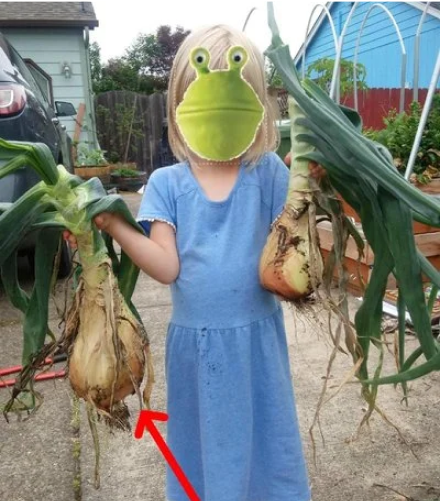Whether it’s Spring and little plants are just beginning to poke their heads out or if it’s the dead of Winter and you feel there’s nothing to do with the garden, think again. Any time in the season is a great time for planning a garden layout. It doesn’t really matter whether you have a small garden space to work with or several acres. The techniques outlined in this post will help you plan your garden to ensure a fruitful and successful harvest season that will satisfy your inner gardener. Follow these easy steps and have a look at some inspiring examples before you get to planning a garden layout!
1. Size your Space(s).
Step one is to figure out how much space you have available to grow your garden. This will help you determine which plants you can grow and the yield that can be produced. When you’re planning a garden layout, it’s not that important to take exact measurements, instead you can estimate just by looking at it. Really we are just trying to determine what growing methods should be used.
Many beginning green thumbs worry that having a small space like an apartment balcony or tiny side yard will impede them from getting a high yield and unfortunately, many people who would like to garden don’t even venture a try for this very reason. As you might know, our goal is to empower people to grow their own food no matter where they live! (Check out this article on Bill Mulleson talks about how to create a garden to supply 50% of the food for two people on a small balcony.)
What about my small space? Grow upward!
One great way to maximize the productivity of your garden is to use garden trellises and train your plants to grow upwards. That’s right, you can actual train a plant much like any other pet and guide it on it’s growing journey.
Take a look at this garden layout example.
(community garden pic)
As you can see this very small space has been maximized to it’s full potential by allowing these beautiful butternut squash to grow vertically. Hard to believe that a vegetable that heavy will stay that high up!
If you have limited growing space and will be using trellises, keep in mind that this will shape the types of plants you will be able to grow. In general, trellises are used for climbing plants like cucumbers, beans, tomatoes, but can also be used for ground covering plants like melons, squash (as seen above) and even peppers.
What if I don’t even have a yard? Bring soil in!
x% of people in cities live in apartments which usually means that they don’t have any land to grow a garden on, however, this is not a problem if you have a balcony or window sill. By using container gardening methods you can turn a slab of concrete into an abundant garden space. All it takes is some containers, potting soil, water, and seeds. Often times you can find used buckets or other types of containers at used hardware supply areas or just sitting on the corners in alley ways. Get creative with it!
What if I have too much space? Get focused!
Some of you might have the lucky problem of having too much space. While most will be jealous of you, we acknowledge that this can be a great challenge depending on your level of experience and commitment to your garden. We recommend that beginning gardeners with a ton of space focus on one specific area to make a manageable garden that will be productive. Often times, three 5 by 7 foot raised beds is more than enough to produce a satisfying harvest for two people and doesn’t take much effort.
2. Sample your soil
When you start your garden you might have poor soil or quality soil. Either way, before you get to planning a garden layout, you will need to determine what’s lacking and what’s abundant in your soil. Why, you might ask? Because healthy soil leads to healthy fruitful plants. The four key elements to pay attention to in your soil are Potassium, Nitrogen, Phosphorus, and pH (acidity and alkalinity). As you learn, you will find that some plants like more or less of each nutrient or pH level. Depending on what you want to grow it will be important to amend or enhance the soil to be up to par with the needs of the plant. Get the soil sample to know where you’re starting and what you’re working with and we’ll go from there.
3. How Will You Water?
Plants, like all beings on earth, need water to survive and to thrive. When you’re planning your garden layout it will be important to also plan your watering schedule or even irrigation layout.
Availability
What kind of climate do you live in? If you live somewhere where it rains everyday, you won’t need as much as a hose to water your garden. You will be able to literally set it and forget it when it comes to watering. If you live in an arid climate then watering woes will take some thought to figure out. Try these two ways listed below to get started.
-Irrigation
If you are thinking about busting out the hose everyday to water your garden, forget about it. I have tried it and eventually it will get tiring, or you will forget and your garden will suffer. Besides, it is much better to water the plants more than once a day depending on what you are growing. You want flexibility. That is what irrigation is for.
Installing an irrigation system can be done with under 100 dollars including an irrigation timer, tubing, and fittings. You can schedule most timers to water up to 6 times per day, which is more than enough.
-Rain Water Harvesting
We highly recommend rain water harvesting no matter which area you live in. Most states have regulations that prohibit rain water catchment systems. In my opinion, everyone should be catching water at their home, using it and letting it flow back to aquifers after it seeps through the soil, rather than being transported via storm drains to a central processing facility. If you are going to harvest rain, please be sure to check your local regulations and be aware of the consequences.
4. Sun or Shade?
An important piece of planning a garden layout that is frequently overlooked is assessing how much sunlight exposure the garden receives. Unfortunately, lack of sunlight is another false barrier that aspiring gardeners face. Even if your garden space is fully shaded by trees or buildings, don’t hesitate to cultivate! There are many varieties of plants that enjoy fully or partially shady areas. Such plants like lettuce (and most leafy greens), collard greens, some types of beans, and fruiting bushes like rasberries and blueberries are made for the shade.
On the flip side, if your garden has a southern exposure and receives full sunlight, consider planting heavily fruiting plants like squash, tomatoes, and peppers, these plants love the heat. Also, keep in mind that the classic favorite, basil, also loves hot patches.
5. Pick your Plants
Now for the moment of truth. The garden planning phase we all love (or dread) a little bit too much. Which plants should I grow? There are several criteria that need to be considered when choosing plants. Check it out…
Chose your fancy.
I always tell people, don’t grow anything you don’t like. So, grow what you love to eat, because once you harvest it, there is one thing to do. Eat it. Personally I really dislike green beans (I find them flavorless), thus you will never find them in my garden.
Location
This is perhaps the most complicated piece of planning a garden layout. The location you live in will determine what crops you plant, when you plant them and when you harvest them. Soon we will be posting a full map and list of which crops you should grow and when based on location.
Edible or Not
Up until now we have assumed that you will be planting edible crops in your garden, however, we don’t want to ignore the gardener who wants to plant flowers. After all what will your bees from your beehive feast on to produce all that honey you want to harvest? Ok, so maybe we are biased, but we think that if you’re going to water a plant, take care of it, weed the garden, then you might as well eat it! You’d be surprised how easy it is to grow fruiting crops. It’s just as much effort as growing flowers.
Challenging Crops VS Easy Crops
If you’re a beginner we recommend starting with the following crops due to their easy to grow factor. Lettuce, Spinach, Kale and Squash of any variety. If you plant these crops, you are likely to be happy with your first garden.
If you’re a seasoned gardener or maybe going for a challenge on your second season, try growing tomatoes, carrots, beets, or other root vegetables. You can also try growing fruiting bushes or trees which don’t fruit the first few years and take a great deal of patience and extra care to reach harvest. These challenging crops can be extremely rewarding in the long run and you’ll find that they tend to give back to you 10 fold what you put in to get them established.
6. Planting
Leave enough room for growth.
When it’s time to plant many beginners ignore the seed package and jump directly into the planting. It’s important to note the spacing distance indicated on the seed package. Imagine a giant squash plant. The plant might cover 20 square feet of space if it does well and all it took was one seed to get that monster going. It’s always best to consult the package when it comes to planting distance and depth.
Wrap up
This post is meant to be a resource for the beginning gardener getting started or the seasoned gardener looking for more garden layout ideas (shown above). If you have any friends struggling with planning a garden layout or someone who is pondering getting a garden going, push them over the edge and send them this step by step easy to follow guide to inspire them!
If you have anything that we should have included here, please do comment and let us know what you have experienced with different garden layouts.
https://groweverywhere.com/?p=104




Super excited and hope this program works!!! I’ve never grown a vegetable in my life. If you are only flooding the bottom of the grow bed how does water get to the the top to start the seed? I understand when the roots get down there but how do they get to the water. How does the root/seed even start? This is all new to me. Also, mine will be built from wood framing do you use the dura scrim in the grow bed as well? I live in Vegas it’s hot here!